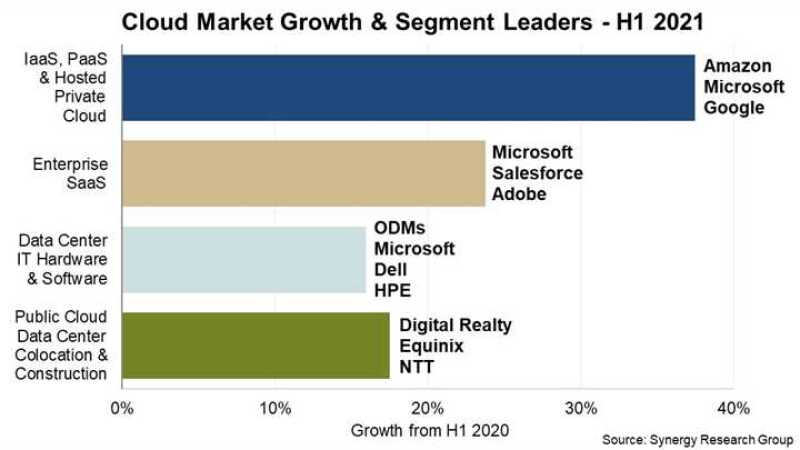The biggest growth was seen in cloud infrastructure services, comprising IaaS, PaaS and hosted private cloud. First half revenue from these segments grew by 37% when compared to 2020 while enterprise SaaS revenues grew by 24% and spending on IT hardware and software for public, private and hybrid infrastructure grew by 16%.
The figures, published today by Synergy Research Group, also showed that cloud provider spending on colocation, leasing and data centre construction grew by 17%. However, there is much more to come.
“Cloud-associated markets are growing at rates ranging from 15% to over 40% per year and our forecasts show that annual spending on cloud services will double in under four years," said John Dinsdale, a chief analyst at Synergy Research Group
“While a rising tide lifts all boats, the companies doing particularly well are those which don’t have boat anchors of large, legacy non-cloud markets. Ten years ago companies like Amazon, Salesforce and Google were hardly present in enterprise IT, but are now a major force in the market. Microsoft is also particularly noteworthy. It has had a large enterprise presence for many years but has transformed itself into being the leading cloud player, based on revenues from the whole ecosystem.”
The global giant has also been ramping up the reach of its Operator Connect service over recent weeks.

Multi-billion dollar market
In total, spending on the hardware and software used to build cloud infrastructure exceeded $70 billion in the first half of this year. Synergy said this means public cloud spending is now "substantially bigger than private cloud".
Infrastructure investments by cloud service providers helped them to generate more than $150 billion in revenues from cloud infrastructure services – that is IaaS, PaaS and hosted private cloud services – as well as enterprise SaaS.
Data centre leasing, colocation services and construction also continued to grow, driven by the activities of cloud providers. This grew by 17%.





